
Photo showing 75% intake of a plate of food.
- Subject:
- Career and Technical Education
- Education
- Health Education
- Material Type:
- Diagram/Illustration
- Author:
- Myra Sandquist Reuter Ma Bsn Rn
- Date Added:
- 02/24/2023

Photo showing 75% intake of a plate of food.
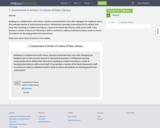
Building on a collaborative staff culture, teachers presented their SLOs with colleagues for feedback and to find common themes in instructional practices. Professional Learning Communities (PLCs) shifted their focus from teaching to student learning as a result of increased data literacy skills across staff. It has become a mission of the Grant Elementary staff to continue to address individual student needs to ensure all students are showing growth and achievement. Read more about these practices in the module.
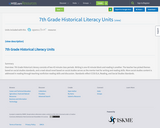
Overview: 7th Grade Historical Literacy consists of two 43 minute class periods. Writing is one 43 minute block and reading is another. The teacher has picked themes based on social studies standards, and a read-aloud novel based on social studies serves as the mentor text for writing and reading skills. More social studies content is addressed in reading through teaching nonfiction reading skills and discussion.
Standards reflect CCSS ELA, Reading, and Social Studies Standards.
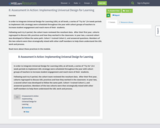
In order to integrate Universal Design for Learning (UDL) at all levels, a series of "Try Its" (3-4 week periods to implement UDL strategy) were scheduled throughout the year with cohort groups of teachers to increase student engagement and reach more of their students. Following each try it period, the cohort team reviewed the resultant data. After their first year, cohorts regrouped to discuss UDL practices and how they worked in the classroom. In year two, a second cohort was developed to follow the same path. Cohort 1 trained Cohort 2, and answered questions. Members of the two cohorts were then strategically mixed with other staff members to help them understand the UDL work and process. Read more about these practices in the module.
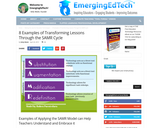
SAM is an acronym that stands for Substitution, Augmentation, Modification, and Redefinition. This site provides some examples on how to use SAMR as a strategy to support higher-level thinking skills.
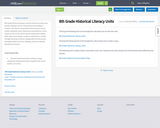
8th Grade Historical Literacy consists of two 43 minute class periods. Writing is one 43 minute block and reading is another. The teacher has picked themes based on social studies standards, and a read-aloud novel based on social studies serves as the mentor text for writing and reading skills. More social studies content is addressed in reading through teaching nonfiction reading skills and discussion. Standards reflect CCSS ELA, Reading, and Social Studies Standards for History.
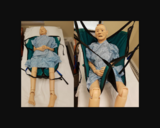
Photo of a mannequin prepared to transfer using a crossed sling.
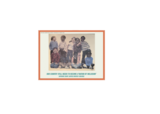
District administrators are responsible for a variety of tasks including hiring, explaining the rationale for curricular decisions and more. Resources in this section provide administrators with important sources to assist them in cultivating a positive, culturally sensitive and successful learning community.

Explore the newest resources published by a team of school librarians with other librarians in mind; Developing Inquisitive Learners, Critical Thinkers, and Resourceful Citizens'

Students rotate through a circuit of ABC posters every 3-8 minutes, generating words or phrases for each letter of the alphabet related to the topic provided.
This teaching strategy/activity can be used as an introduction to a lesson or as an evaluation/assessment.
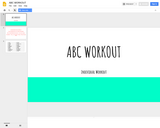
Alphabet Workout
We used first and last names. Every letter is an activity. You could spell answers to review questions, random questions, or vocab words. Possibilities are endless! Work individually or as a group. Make it fit for your curriculum and environment.

ABCs of a School Meeting is a self-paced training for educators and families which covers:
Why family involvement matters
Types of school meetings
How to prepare
The importance of effective communication
Techniques to build partnership with your child’s team
The goal of the training is to enable families, teachers and students to have knowledge of the different kinds of school meetings related to disabilities. The takeaway is to look for the best ways to expand communication and build a team with the school and family to support the student with disabilities.
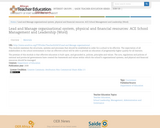
This module examines the structures, systems and processes that should be established in order for a school to be effective. The expectation of all stakeholders in the school environment is that an effective school will be able to provide an education of progressively higher quality for all learners. The premise of this module is that effective education is built upon, and grounded in, policies, principles and values. The acts, regulations and policies of national and provincial governments have created the framework and values within which the schools organisational systems, and physical and financial resources should be managed.
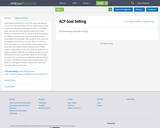
Goal setting is powerful and critical life skill. Goals allow us to turn our vision of the future into our reality. Goals provide us short-term direction and long-term vision.
To set big life goals, we must first dream big and create a list of all the things we would like to see, do, and accomplish throughout our lifetime. From there, we can set small goals that are measurable and achievable. Then, we get to work!
Goals can be integrated into all areas of our life. We can strive to be more successful in our classes, faster on the court, or active every day. Goal setting is about making ourselves better, happier, and healthier.
For the rest of the school year, we are going to set goals related to our academic success, personal well-being, and career preparation. When we set our goals, we want to be sure that we are working towards something we want to ACHIEVE and simply make ourselves better. Self goals are in fact goals to better ourselves NOT the people around us. Remain true to you!
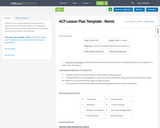
Students will use engineering skills to develop and use models as well as collaboratively plan an investigation to make sense of buoyancy.
Remix this template to upload your ACP lesson and unit plans into WISELearn.
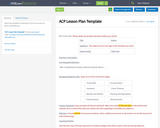
Remix this template to upload your ACP lesson and unit plans into WISELearn.
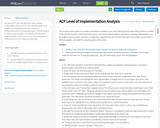
The district ACP team will efficiently create a graphic representation of your district's ACP implementation using the Wisconsin Department of Public Instruction Infrastructure and ACP Component Rubrics. This will be used as a basis to identify gaps in ACP delivery and barriers for implementation. It will be the basis for the development or improvement of an ACP implementation plan.
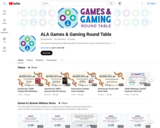
The Games & Gaming Round Table (GameRT) of the American Library Association (ALA) provides a venue for networking and collaboration for library workers interested in the use of games and gaming in libraries.
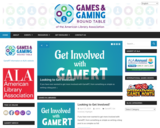
The Games & Gaming Round Table (GameRT) of the American Library Association (ALA) provides a venue for networking and collaboration for library workers interested in the use of games and gaming in libraries. GameRT was formed in 2011 and with members from all types of libraries, GameRT encompasses a wide variety of viewpoints, situations, and user types.
The mission of the GameRT is to:
- Provide a forum for the exchange of ideas and concerns surrounding games in libraries;
- Share resources to the library community that support building and maintaining library game collections;
- Advocate for initiating and supporting game programming in libraries;
- Create an awareness of, and need for, the support of the value of gaming and play in libraries, schools, and related learning communities;
- Create an awareness of the value of games and gaming in library outreach and community engagement plans.
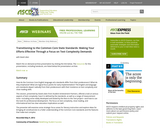
How do the Common Core English language arts standards differ from their predecessors? What do they emphasize? What are logical focus points for early implementation? The English and language arts standards depart radically from their predecessors with their insistence on text complexity and close reading skills.
This session, presented by David Liben from Student Achievement Partners, offered a look at various aspects of text complexity: how it is defined by the standards, as well as a range of measurement tools—including some newly developed and tested by the Race to the Text project—and how to use the tools for professional development. The focus on text complexity, close reading, and informational text has clear education implications as well. The presenter will examine some strategic focus areas for literacy instruction and explore ideas for bringing all constituencies to a fuller understanding of the Common Core standards and the features that make text complex.